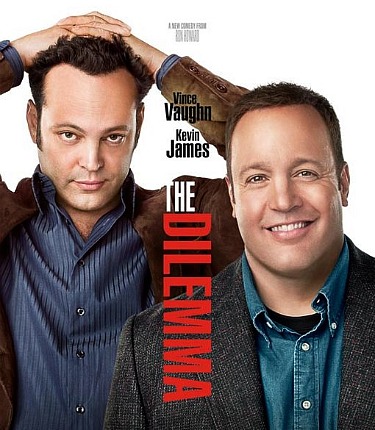The Green Hornet (Sony, 1.14) is a blend of superhero sludge and a buddy action comedy. Except the action has no juice — you’ve seen the same duke-out, shoot-out, car-chase, demolition-derby stuff hundreds of times — and it’s not the least bit funny, largely because it won’t stop hitting you with the same old routines. What you get is unimaginative, routinely-staged action. The appalling use of decades-old cliches. Boring and/or tediously-drawn characters. Painful GenX-wanker dialogue that feels half-trite and half-improvised. And not even faint amusement.
It’s a co-creation of actor-producer-screenwriter Seth Rogen, co-writer Evan Goldberg, director Michel Gondry, and everyone else who tried to make this into a film, going back to the ’90s.
This is one of those big movies that make you feel as if you’re being poisoned. You sit in your seat feeling like Alexander Litvinenko succumbing to radioactive polonium-210. This is what corporate entertainment has become in the 21st Century — a kind of death-trip experience. Most of the time you sit and think about “the end” and what that’ll be like, and the rest of the time you sit up and pay attention to the dialogue in order to follow the plot.
What a shock that Gondry (Eternal Sunshine of the Spotless Mind, Human Nature, The Science of Sleep), a signature director with a recognizable aesthetic, decided to whore out with this thing.
The irony, of course, is that The Green Hornet is as old as fish fossils. The basic bones — irresponsible newspaper heir Britt Reid (Rogen) and trusted chauffeur Kato (Jay Chou) becoming an urban crime-fighting team — were originally created for a 1930s radio serial. So it’s the last classic superhero tale to reach the big screen, it took forever to get made, and it’s basically a big 3D shit sandwich.
Some of the geek critics are calling it “one of the better superhero flicks of recent years,” “sly, silly, thrilling,” and “a surprisingly funny and ingeniously clever take,” etc. If you want to believe that, go right ahead.
I went into this thing believing that Rogen is a cool actor-writer with good humor instincts, and I came out of it wondering what’s happened to the poor guy, and how could he have been part of something like this? I know that poor Christoph Waltz, last year’s Best Supporting Actor winner for Inglourious Basterds, has diminished his rep by playing a drug-dealing bad guy in the usual “My God, I’m so evil I can’t help but joke about it” deadpan-shrug sort of way. (Why does the winning of Oscars always seem to lead to stupid paycheck roles, and the eventual ruining of careers when the actor/actress accepts too many of them?) I don’t know why Cameron Diaz is in this thing, but she is, playing a peripheral sex-tease character.
One of the reasons The Green Hornet cost $130 million is that “the production modified 29 Chrysler Imperials from model years 1964 to 1966 to portray the Green Hornet’s luxurious supercar, the Black Beauty,” according to a May 2010 N.Y. Times story. They couldn’t have made do with ten?
Chou’s Kato is an unquestionably cooler dude than Rogen’s Reid. Even in his stoner modes Rogen has always played reasonably bright fellows, but he seems borderline retarded in this outing. Reid has trouble thinking or saying anything above the level of “this coffee sucks.” On top of which he’s a spoiled, immature blowhard. He’s genuinely annoying. But Chou is cool and contained and the brains of the partnership. I liked him, and didn’t care for big-mouth Rogen dismissing or putting him down. I muttered, “You should take orders from Kato, bitch!”
I mentioned yesterday that I cooked up a metaphor in my theatre seat about Chou representing the more dynamic and forward-moving Asian economies of 2010 and Rogen representing the smug, flatulent and coasting-on-past-glories U.S. economy.
I’ve said time and again that outside of the Chris Nolan realm, the comic-book superhero genre is a plague and a pox upon our cinematic house. And I’ve explained the reasons until blue in the face. It’s gone way beyond the milking-to-death of the empowerment-through-transformation fantasy (lonely, morose compromised guy finds potency through costumed crime-fighting alter-ego). You might as well call the constant re-packaging and re-selling of this sad little dream by corporate-funded movie studios a malevolent Orwellian scheme. You have no power, suckers, and we want it kept that way so here’s some more heroin to distract you from the facts.
To me there’s nothing sadder than the eagerness of the ComicCon culture to pay to see the same thing (okay, with slight variations in terms of identities, costumes, villains, CG and the usual crash-boom-bang) in film after film, year after year. They have no shame, and there’s no talking to them about this. Their comic-book and gamer appetites, instilled during their late ’60s, ’70s and ’80s childhoods, are like serum in their souls. To me the relentlessness of superhero films has become a kind of mass poison.
In his review of this Michel Gondry film, Hitfix‘s Drew McWeeny writes that it “seems like filmgoers don’t mind [the oppressive sameness] because they continually go see [these] films without major complaint.” Exactly. This is why I’ve floated the idea of F14 Tomcats strafing the ComicCon faithful outside the San Diego Convention Center. They have their fantasies; I have mine.












